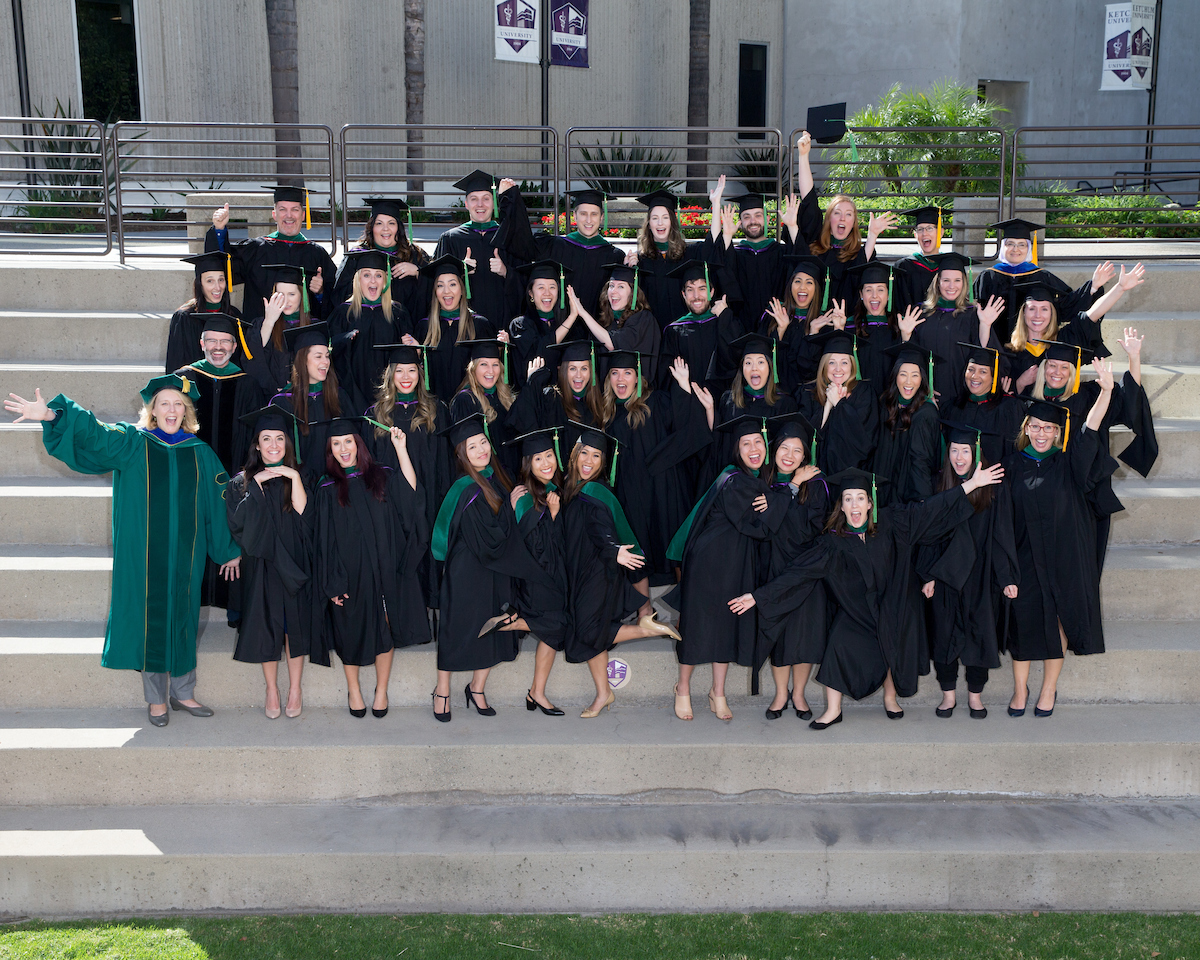On Nov. 11, 2017, 32 students in the PA Class of 2017 will graduate from Marshall B. Ketchum University with their master of medical science degree and PA certificate. These students represent the second PA class to successfully complete Ketchum’s 27 month, post-baccalaureate program. The School of PA Studies’ mission is to educate individuals to become compassionate PAs who can provide the highest quality health care and are dedicated to their communities, while advancing the PA profession.
“Under the mentorship of the School’s committed faculty, the Class of 2017 has embodied our mission and we are proud to witness these students enter our community as Ketchum University alumni,” said Dean of the College of Health Sciences and Director of the School of PA Studies Judy Ortiz, PhD, PA-C.
From a children’s book on asthma triggers to a fall prevention education program at Leisure World, Ketchum University’s PA Class of 2017 has embraced community service projects to engage more holistically with their patients.
The ‘17’s community outreach is an intricately crafted initiative by Ketchum University officials who designed the School’s PA program with an eye to developing medical professionals who seek to know their patients’ medical challenges as well as their socio-economic ones.
“Every patient you see has unique needs,” says Allison Mollet, MMS, PA-C, Associate Director of the School of Physician Assistant Studies and Assistant Professor. “When the students understand the unique needs and challenges of a population, it helps make them better providers … more compassionate.”
Mollet and other professors at Ketchum sought to make the PA’s master’s thesis process as meaningful as possible, so they incorporated a community service component into it. The students are tasked with thinking about the populations they want to serve and conducting a full needs analysis to determine the specific health care needs of that group. Then they develop projects to help mitigate those needs and launch the projects in the respective communities. Many did follow-up research to gauge the effectiveness of the projects. Each group developed scholarly posters, such as ones that are displayed at academic conferences, to share their research and intervention.
“This was all accomplished while they were completing their clinical rotations and preparing for board exams,” explains Mollet.
The masters candidates will formally present their projects on Nov. 10 to faculty members, guest judges, community clinicians, family and peers. Judges will rank them according to the impact the projects have had on the respective communities and how well they align with the program’s mission statement.
Trigger the raccoon is just one of the components of one such community service project. Trigger: Adventures in Asthma Health, a children’s book authored by PA students, Matt Moretto and Kyle Grgich, outlines common asthma triggers and possible interventions. The students developed the book after witnessing the high absentee rate of elementary school students with asthma in low socio-economic communities.
The students researched the problem of asthma and found that asthma is the leading cause of chronic illness in children and adolescents across the United States. Among children with asthma in Los Angeles County, studies stated that 28% had to go to an emergency room or an urgent care facility for their asthma in the past year.
The students targeted an elementary school in the Santa Ana school district for their project. They worked with school nurses to find out more about the students and their challenges and then wrote their children’s book on asthma triggers – epublishing it in both English and Spanish. They presented the printed book and a PowerPoint on the topic at two school assemblies. The students developed surveys that were distributed after the book readings and found that the elementary school students had an increased awareness of asthma triggers.
Another team of PA students set out to tackle the problem of falls by the elderly. They developed a fall prevention awareness program and took it into Leisure World – a living community for seniors. They spent two days in the lobby of Leisure World’s health care clinic talking about fall prevention therapies.
Resurrecting a dormant support group at Children’s Hospital of Orange County (CHOC) was the focus of another student team. A different group of students focused on educating primary care providers about ways to ensure patients have advanced care directives in place. They developed new practical tools that some primary care providers are now using.
Mollet says that training PAs to look at a patient’s environment allows them to see that many unmanaged medical problems may be affected by social determinants such as lack of transportation to health care facilities, cultural norms, stigma, and costs associated with health care. These factors play a large role in the percentage of patients who are able to and choose to seek health care.
The idea behind the community service element of the PA program – and indeed the entire PA program itself – is to help shape new PA’s to be the most effective, compassionate health care providers possible. “In addition, the masters project helps students develop important research and writing skills and gain experience in scholarly presentations,” explains Mollet. \
“We also hope the projects help them keep their eyes and their hearts on the reason they went into medicine to begin with – to help people,” says Mollet.
The School of PA Studies at Ketchum University will host its second Commencement Ceremony on Saturday, Nov. 11, 2017 at Hope International University in Fullerton, Calif. At 11 a.m.

